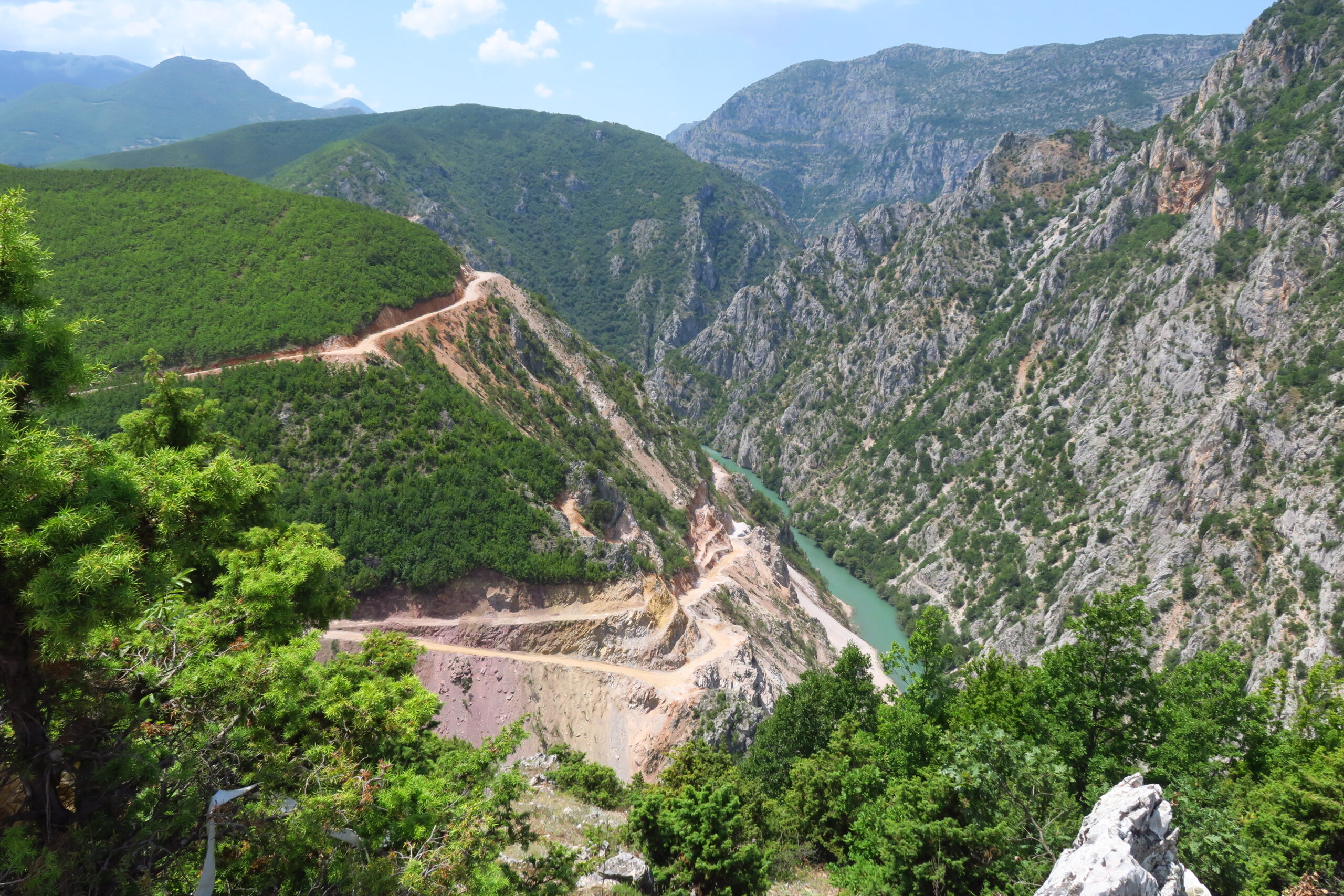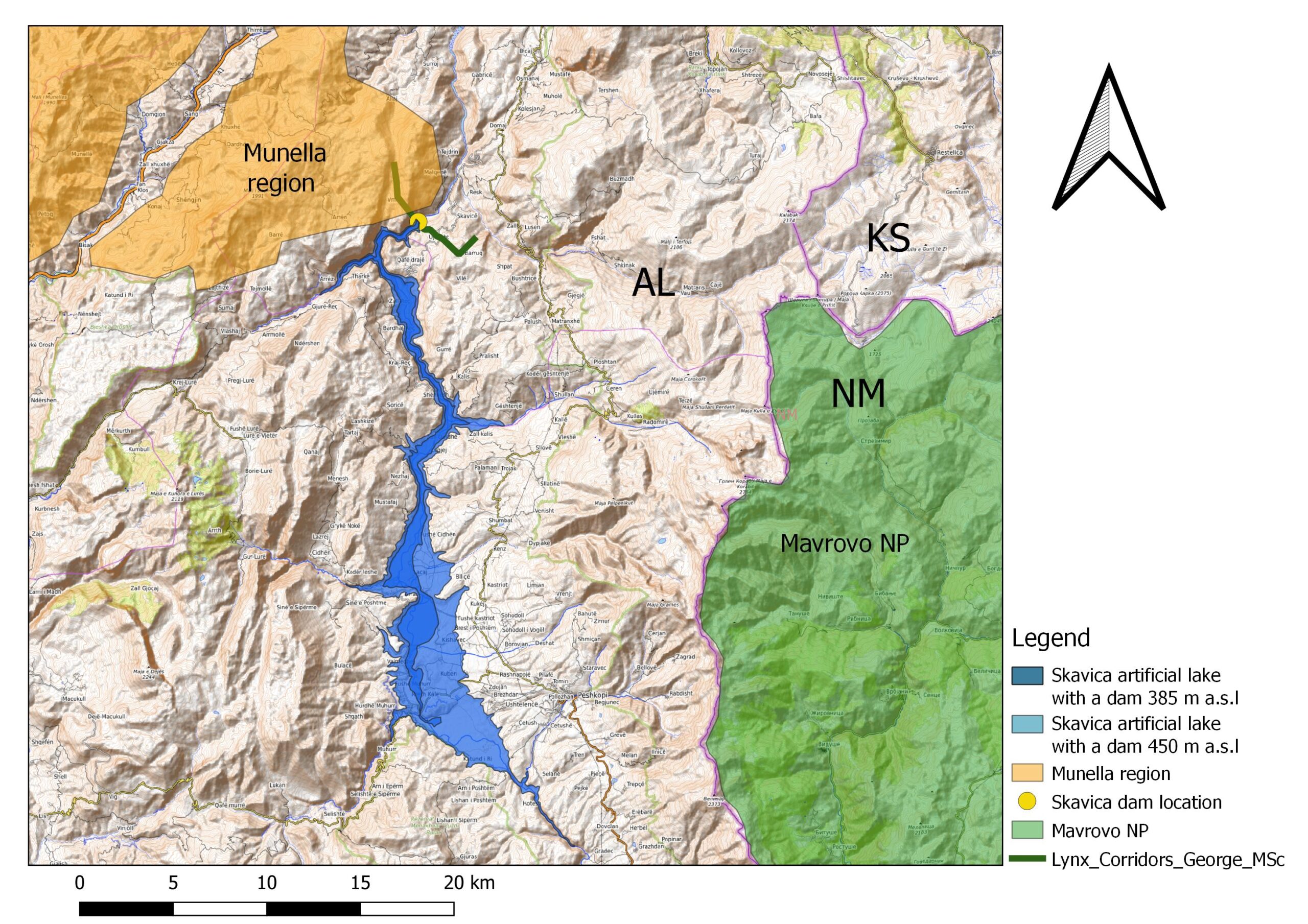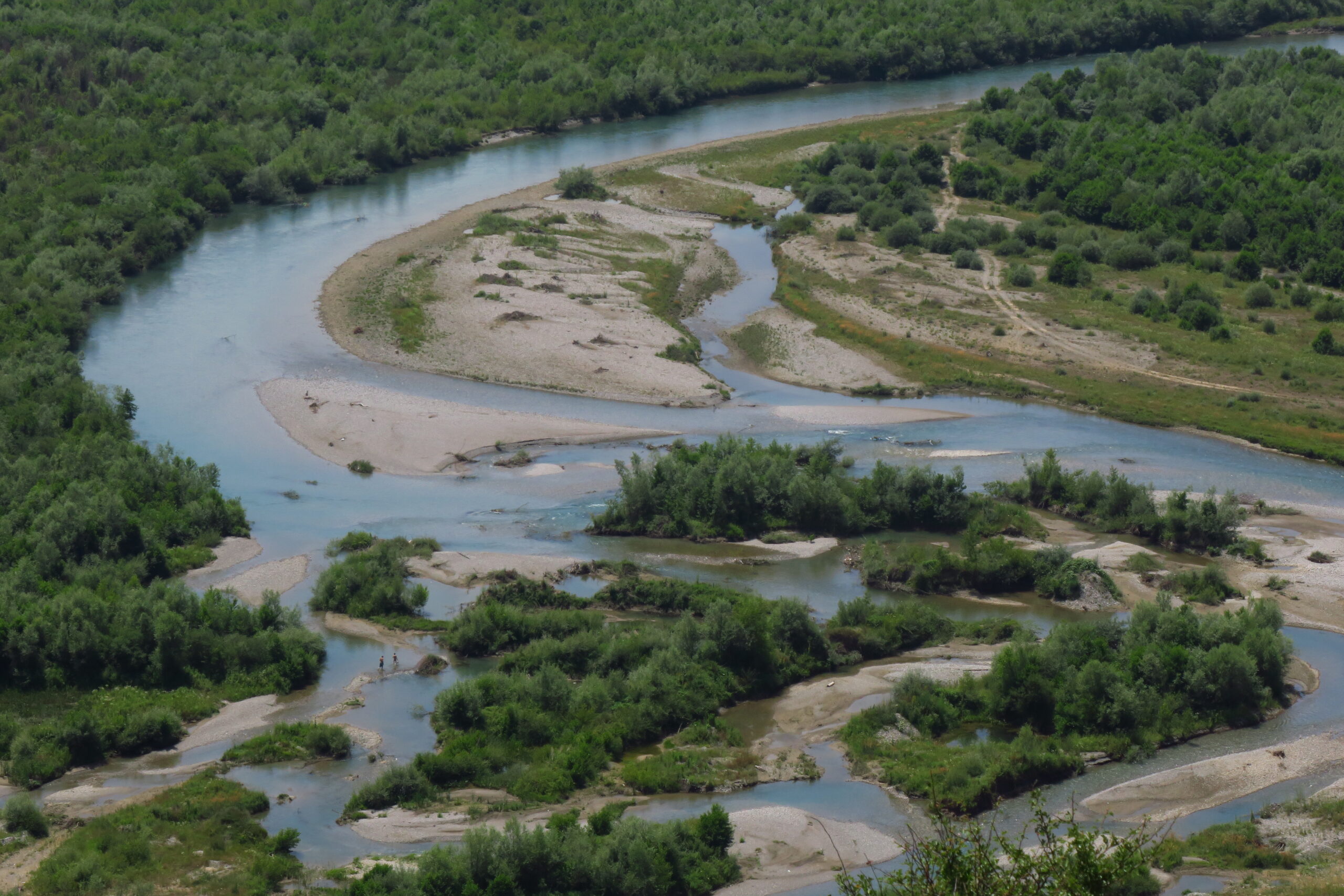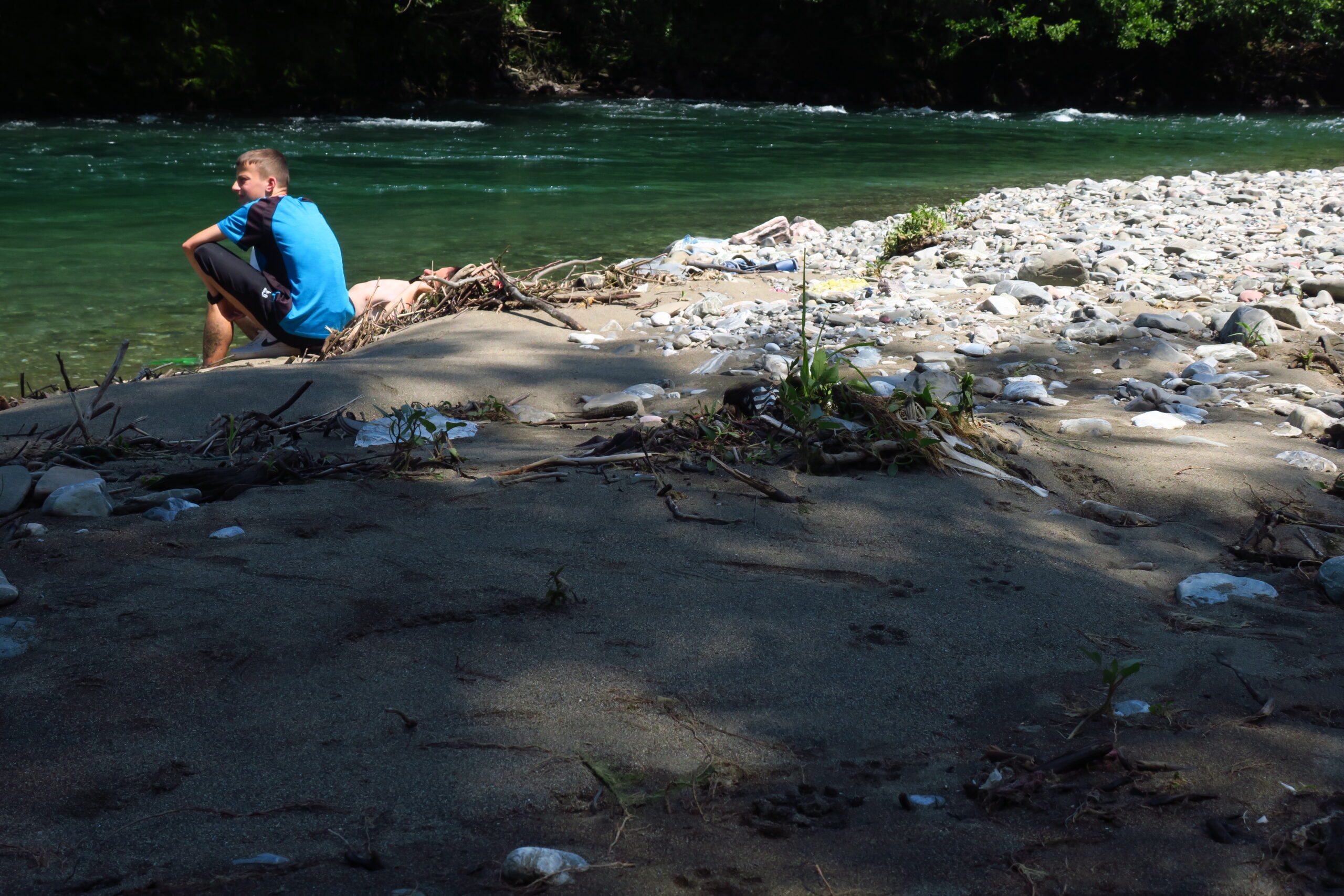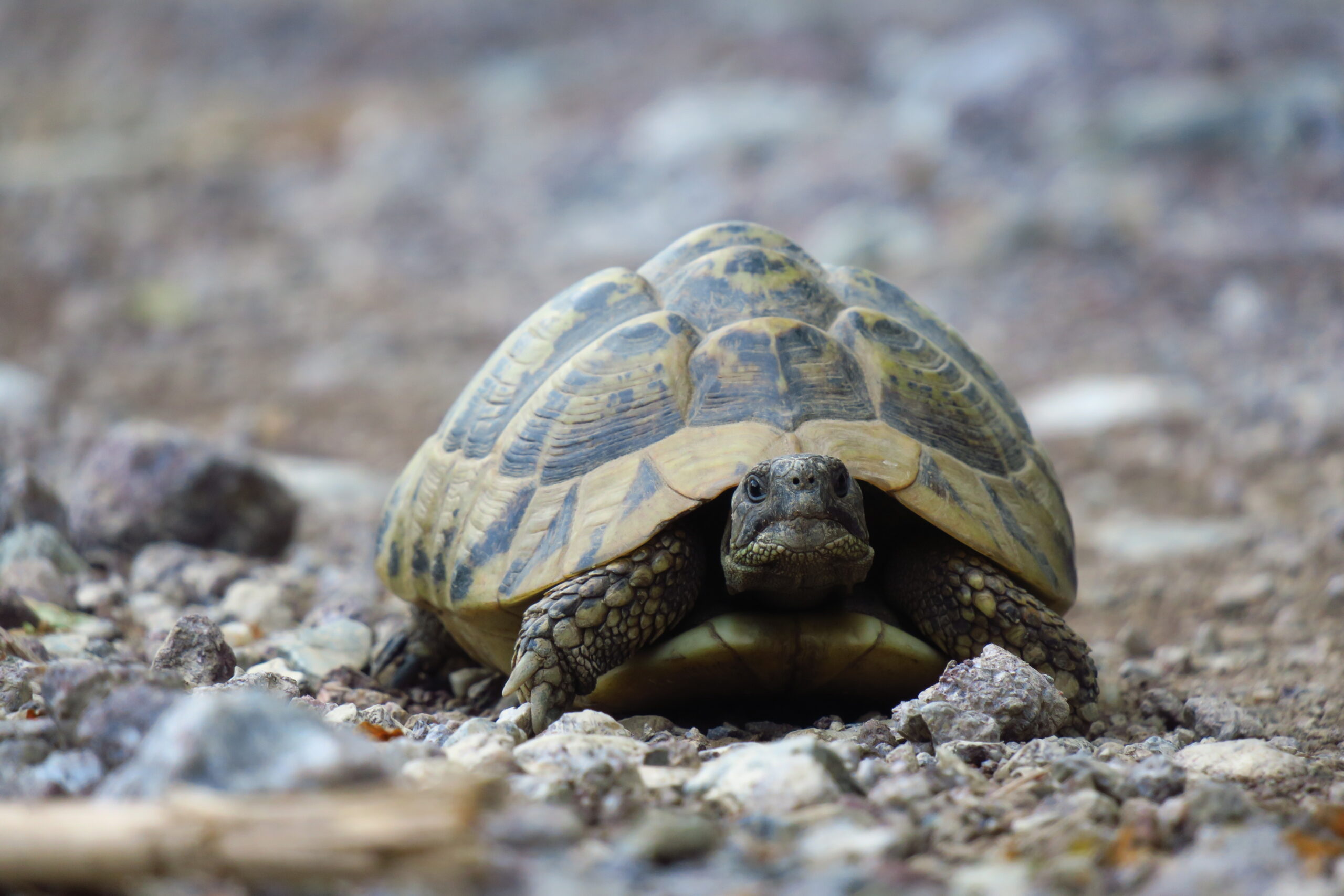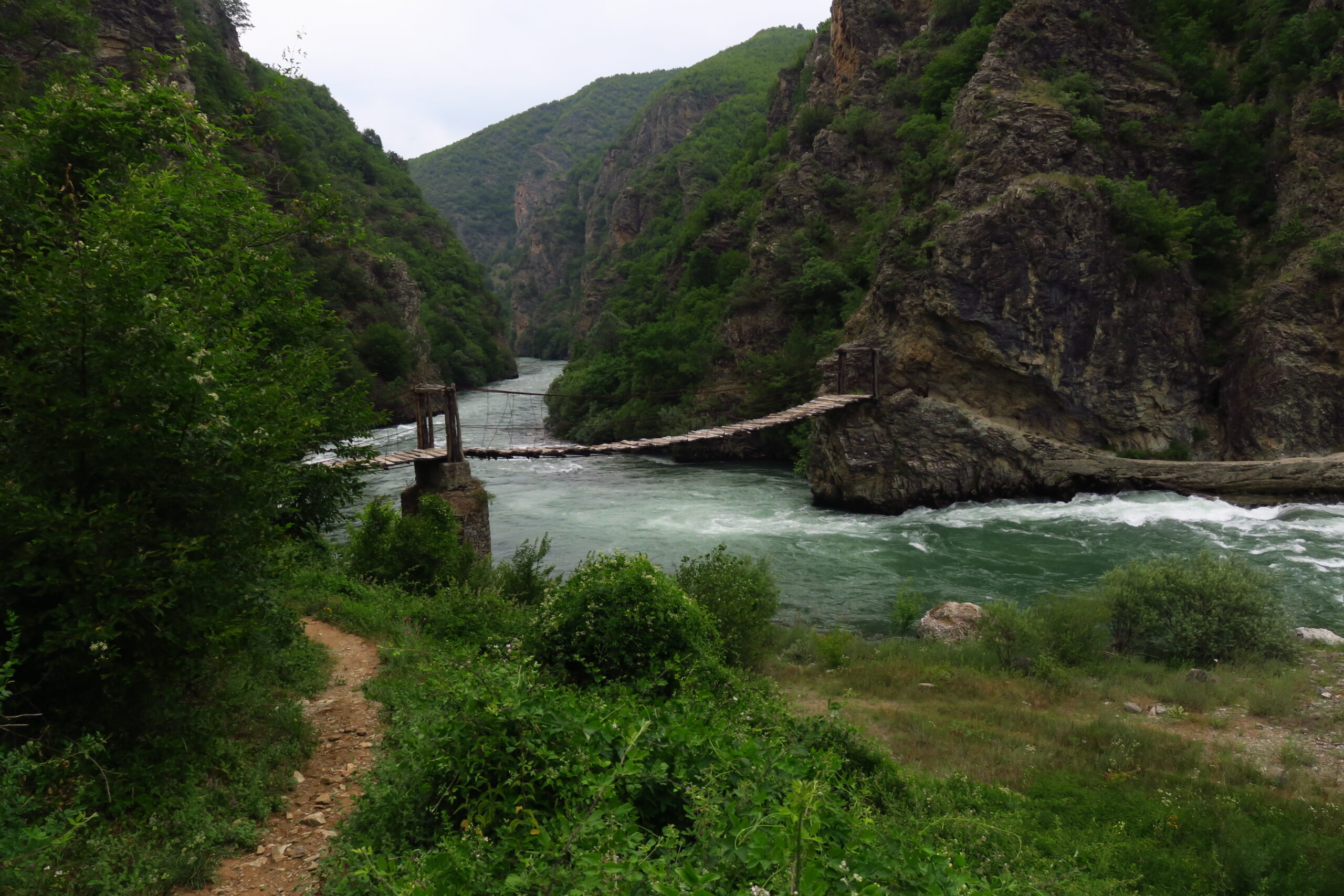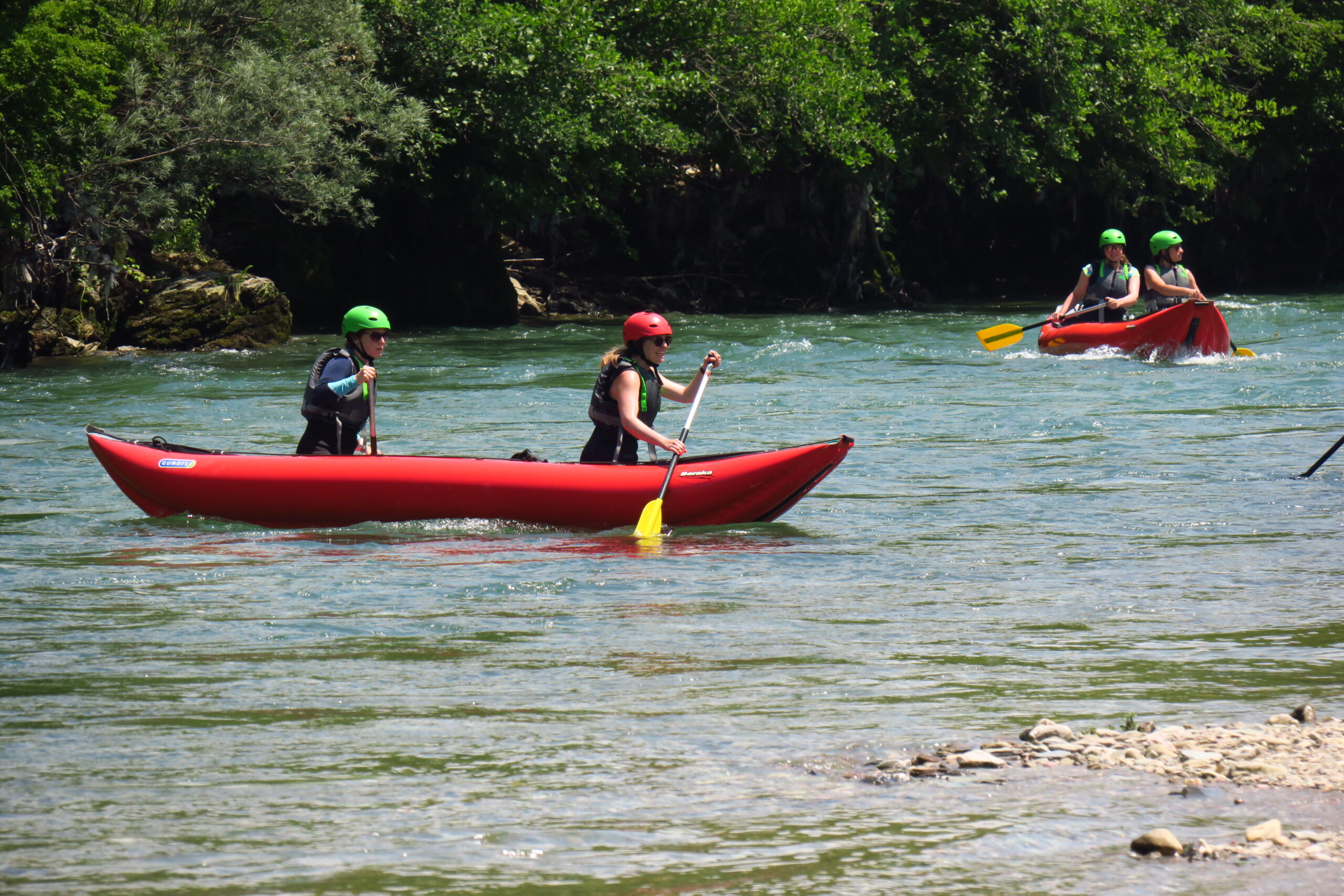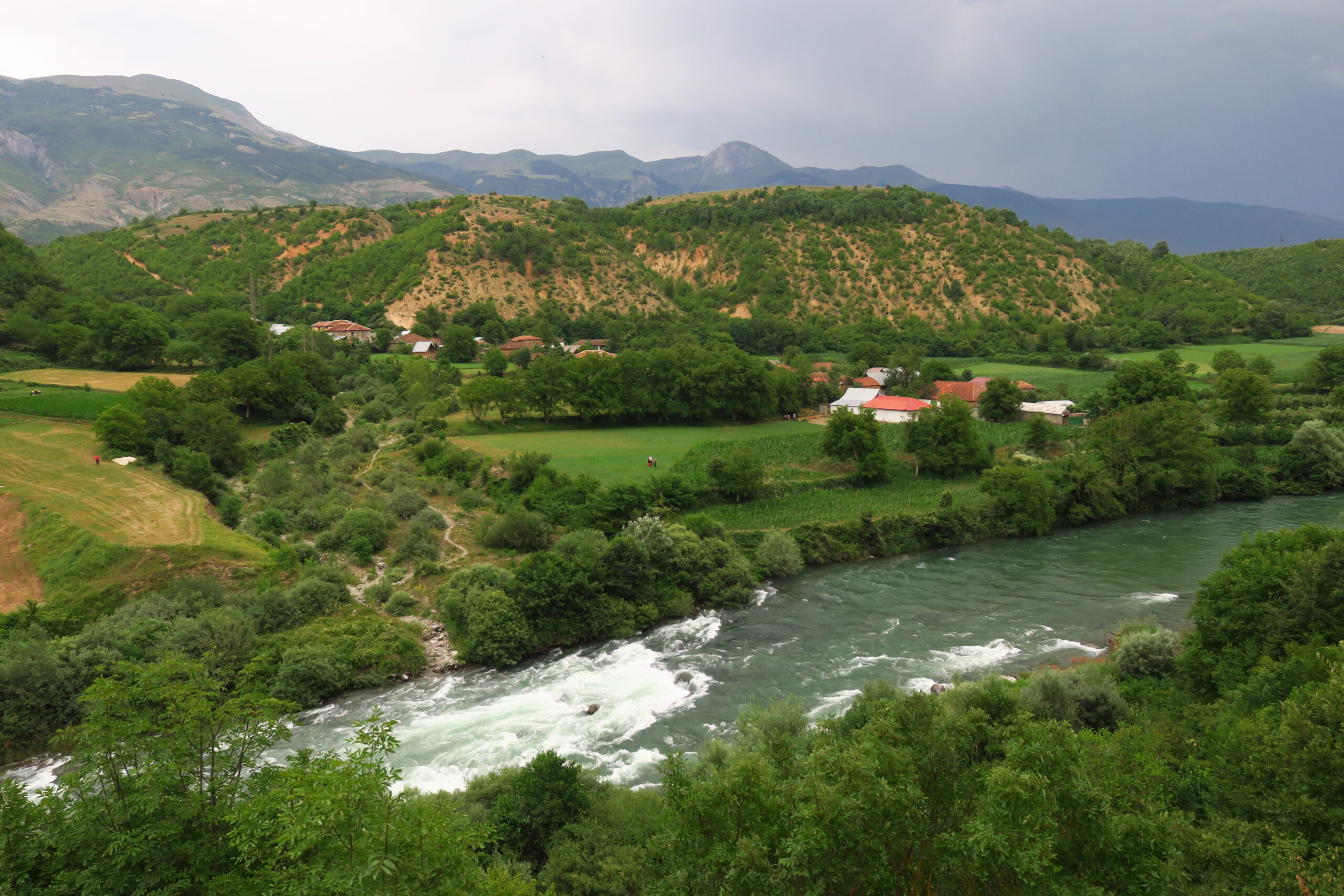Instead of increasing its energy security, Albania is pushing the construction of yet more hydropower. The Skavica project may flood several villages, displace thousands of people and bring the Balkan lynx to extinction
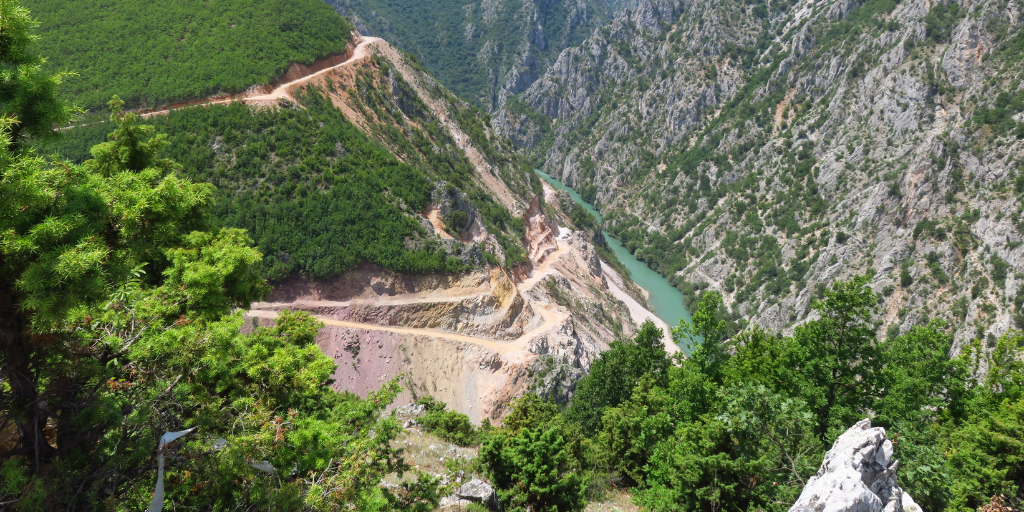
Photo: Construction works at the probable Skavica dam site, Andrey Ralev, July 2022
Stay informed
We closely follow international public finance and bring critical updates from the ground.
Key facts
Project promoter: KESH (Albanian Power Corporation)
Installed capacity: 210 MW
Lead contractor: Bechtel, US
Financing: None confirmed – possibly US International Development Finance Corporation (DFC), UK Export Finance and HSBC
River: Black Drin
Protected areas/species: Balkan lynx (critically endangered), at least five species of endemic fish, alder-willow riparian forest
Other key risks: Expropriation, corruption, local opposition, geological
Key issues
- Albania needs energy diversification, not yet more hydropower.
- Skavica dam would have massive social impacts – thousands of people displaced and traditional agricultural land flooded.
- Local people and the Albanian diaspora are strongly opposing the dam.
- The estimated costs for the project have risen four times to over a billion euros. Financing has not yet been secured.
- A special law was voted in Albanian Parliament in 2021 to choose the US company Bechtel for the design and construction of Skavica – posing corruption risks in violation of national law.
- Skavica would destroy the last free-flowing stretch of Drin river inhabited by at least five species of fish endemic to the Balkans.
- The rarest cat in Europe, the Balkan lynx, would be driven to extinction.
Background
Albania is almost 100 per cent hydropower-dependent for electricity. Its annual electricity generation has fluctuated massively in recent years, leading to high imports in all but the very wettest years.
It is the only country in the Western Balkans where several large new hydropower plants have been built in recent years, and for several years its renewables incentives scheme only supported hydropower, not solar or wind.
The government has for several years recognised that it needs to diversify its electricity generation and has held auctions for solar and wind capacity, but as of April 2023 only relatively small projects have been built, with a 140 MW solar plant now reportedly under construction.
However, the government and state-owned power utility KESH are still pushing the construction of yet more hydropower in the form of the 210 MW Skavica hydropower plant on the river Black Drin, upstream of the existing hydropower plants there.
Corruption risks and local opposition
In July 2021, seemingly without any tender procedure, a preliminary contract was signed with US construction giant Bechtel to carry out a technical investigation, build access roads for construction and carry out an environmental and social impact assessment for the project. This was preceded by a special law approved in parliament (No. 38/2021), with the name of the company included in the law, therefore, eliminating open procurement and competition. Already, a similar special law for the building of the national theatre was deemed unconstitutional by the Albanian Constitutional court. Bechtel has gained notoriety in the region for its involvement in a number of unsuccessful and/or overpriced projects, usually awarded without tender processes.
This raises risks of possible corruption and doubts about the value for money of the project and the meaningfulness of the forthcoming environmental impact assessment. If deals for the project have already been arranged behind closed doors, then the environmental impact assessment is bound to come up with the ‘right’ answer, irrespective of its actual findings.
Local people have organised many protests in Albania and the US against the planned plant. In 2020 the police fined two of the organisers of a protest, “as a way”, they claim “for the institutions to scare the people from reacting to official decisions”. The Facebook group Opposition to Skavica Dam has almost 5000 followers and a petition has been signed by more than 2000 people.
More than 1400 houses to be flooded and 20,000 people affected
According to our satellite image analysis, more than 1400 houses would be flooded at a dam height of 147 metres. According to information from the Municipality of Dibër, approximately 20,000 people and 2,636 houses would be impacted by the reservoir.
The impacts would include inundating most of the houses, as well as flooding agricultural land, pastures and forests that are crucial for the local communities, and changing the local microclimate.
It is not clear whether such figures are final, as the environmental and social impact assessment does not yet appear to be public as of April 2023, but it is clear that Skavica would be one of the hydropower projects built in Europe in the last 30 years with the highest social impacts.
The alluvial soils (as well as black and grey forest soils) dominant in the Black Drin valley are among the most fertile soils in Albania and agriculture plays a central role in the local people’s livelihood. Fish from the Black Drin also is an important food source. Local people also fear changes in the local microclimate and the triggering of earthquakes after filling up the reservoir with water. The Black Drin valley is also a quickly growing active tourism destination with several organisations starting to offer rafting, trekking and biking tours in the last five years.
The rarest cat in Europe and several endemic fish species would be brought to extinction
The dam would destroy the last free flowing section of the Drin river. Local and international NGOs fear that the dam would impact the biocorridor between Albania and North Macedonia of the critically endangered Balkan lynx (Lynx lynx balcanicus) whose global population is estimated at around 30 individuals.
The gorge of the Black Drin, which has inaccessible cliffs and forests far from villages, is the only area where the lynx can cross between the Mavrovo National Park in North Macedonia and the Munella mountain in Albania. The building of the dam would isolate the only two viable populations and condemn them to extinction.
Additionally, probably the most extensive riparian forest in Albania, with great potential for carbon sequestration, would be flooded, thus making the project very dubious from a climate change point of view. The forest along the Black Drin River composed of black alder (Alnus glutinosa), black poplar (Populus nigra) and willows (Salix sp.) is a priority habitat according to the EU Habitats Directive. Conservation of this forest is necessary to store more carbon in the soil, especially critical in the country with the highest deforestation rate in Europe (which led to a ban on logging being imposed in 2015).
For the native fish populations, many of them endemic and at least six listed in Resolution 6 of the Bern Convention and Annex II of the EU Habitats Directive, the Skavica reservoir will destroy their most important habitat in the Drin River as the existing reservoirs have heavily modified the other river stretches. These species include Drin brook lamprey (Eudontomyzon stankokaramani), Ohrid spined loach (Cobitis ohridana), Western Balkan barbel (Barbus rebeli), Ohrid roach (Rutilus ohridanus), Ohrid minnow (Pelasgus ohridana), and Adriatic brook trout (Salmo “farioides”).
Estimated costs rising and financing uncertain
The US International Development Finance Corporation (DFC) is reportedly interested in financing Skavica, but this should not be considered final unless the loan is signed and disbursed. Due to its likely impacts on the Balkan lynx and the need for resettlement, the project appears to be categorically prohibited by the DFC’s Environmental and Social Policy, Annex B:
Construction of dams that significantly and irreversibly: (a) disrupt natural ecosystems upstream or downstream of the dam; or (b) alter natural hydrology; or (c) inundate large land areas; or (d) impact biodiversity; or (e) displace large numbers of inhabitants (5,000 persons or more); or(f) impact local inhabitants’ ability to earn a livelihood.
The Albanian government also requested funds for the project from the UK Export Finance (UKEF), the HSBC Bank and as a Flagship under the EU Economic and Investment Plan. The Skavica hydropower plant has already had one round of EU assistance cancelled, so it is not clear why more funds were requested. The European Commission has confirmed that none of the greenfield hydropower projects proposed have been endorsed for funding within the Western Balkans Investment Framework (WBIF).
Overall, despite the Albanian government’s confident statements about the project in the media, it is at a very early stage of development and entails several very high risks that may well prevent its construction. As of April 2023, the first phase of the Skavica project has been completed according to the government, including preparatory works, access roads at the proposed dam site, geological, social and environmental surveys.
According to local workers, there are already changes in the project due to geological risks – the Skavica dam area is a pristine canyon with enormous limestone cliffs and cave systems. Several alternatives of dam height are being considered and a draft environmental and social impact assessment and resettlement plan are expected in July 2023. None of the surveys are public yet and local people fear there will not be a meaningful consultation process as the decision to go ahead already appears to have been made. According to KESH, by the end of the year the government might issue all the necessary permits.
Photo gallery
Latest news
Kambarata hydropower project: greater scrutiny from international banks is needed
Blog entry | 19 December, 2025Kyrgyzstan is promoting the massive 1,860 MW Kambarata-1 Hydropower Plant (HPP) as a solution to its ongoing energy crisis. The project, a joint effort with Uzbekistan and Kazakhstan on Naryn River, is actively seeking funding from international financial institutions like the World Bank, the European Bank for Reconstruction and Development (EBRD) and the European Investment Bank (EIB).
Read moreAlbania’s Skavica dam can’t get off the ground – time to finally cancel it!
Blog entry | 24 November, 2025The highly damaging hydropower project could hardly have had stronger political support at its inception, with the country’s parliament passing a special law in 2021 to appoint U.S. construction giant Bechtel as the main contractor. But four years later, the project has stagnated, with no environmental permit and no financing.
Read moreRomania’s Parliament paves the way for environmental destruction and ‘foreign agent’ repression
Blog entry | 20 October, 2025Romania stands at a dangerous crossroads. Last week, a law initiated by the senator Daniel Zamfir in 2022 and already then rejected by the Senate, passed by a crushing majority (262–33) in the decisive Deputies Chamber.
Read moreRelated publications
Kungrad 1-3 wind power project, Uzbekistan
Policy comments | 11 March, 2025 | Download PDFKungrad is one of several large-scale renewable projects featuring extensive transmission lines slated for remote, wild areas in Central Asia – an alarming practice that hinders the sustainable energy transition.
How to interact with development banks lending to hydropower projects in Central Asia: A toolkit for civil society activists
Toolkit | 3 February, 2025 | Download PDFThis toolkit is aimed primarily at civil society organisations in Central Asia tackling the construction of dams or other unsustainable water infrastructure.
The Upper Horizons complex, Bosnia and Herzegovina
Briefing | 18 December, 2023 | Download PDFThe Upper Horizons hydropower complex has been planned since the mid-20th century, and is planned to consist of three plants — Dabar, Nevesinje and Bileća — linked by a series of tunnels and channels. If completed, it would have a devastating impact on the karst ecosystems of eastern Herzegovina and beyond.
